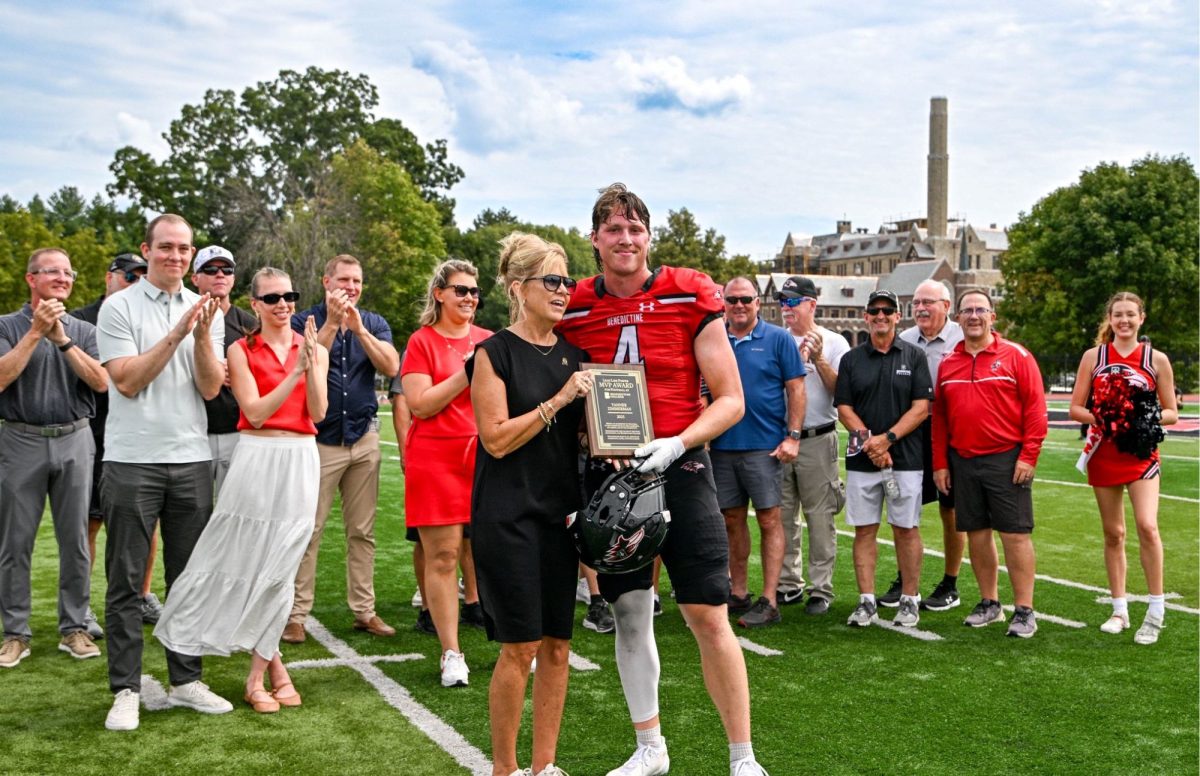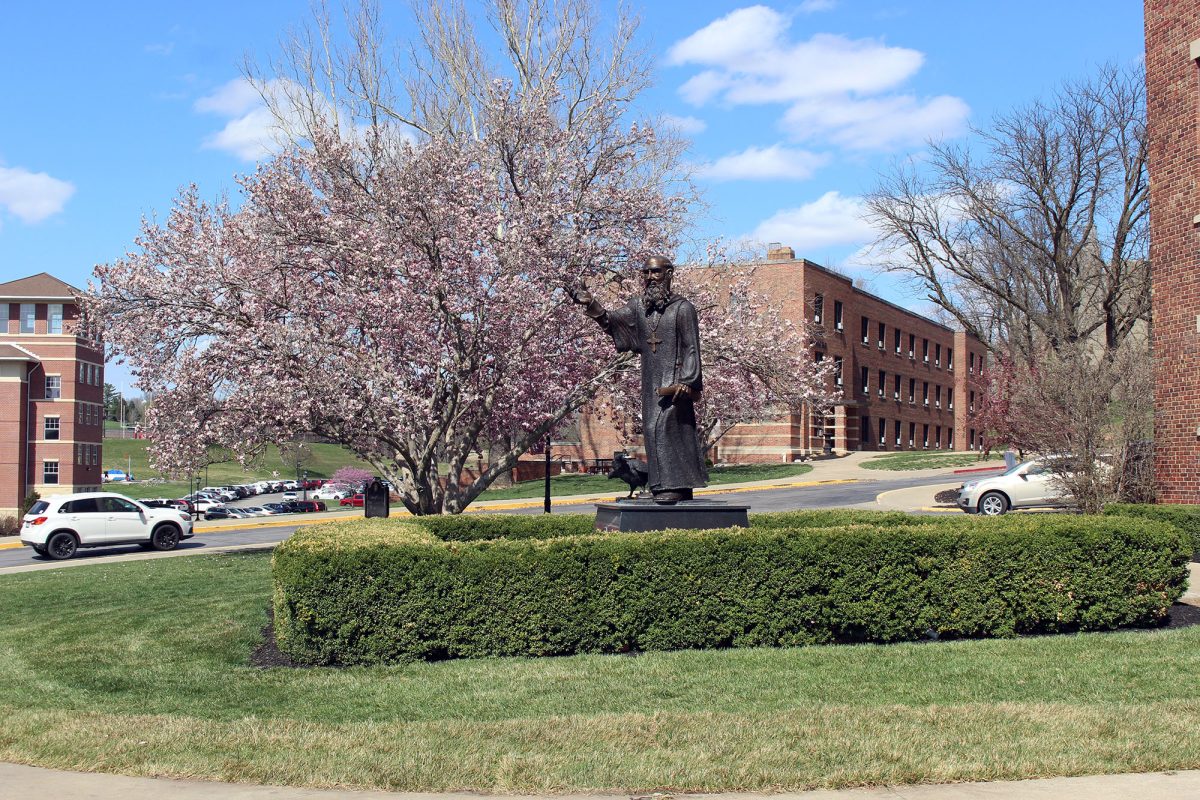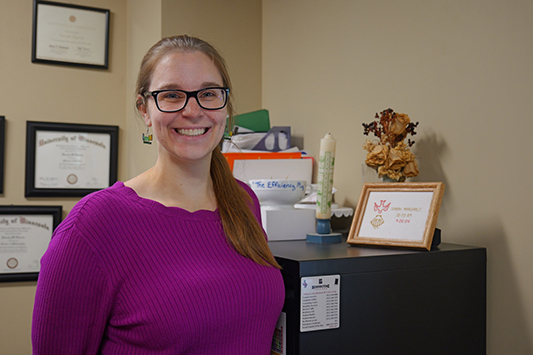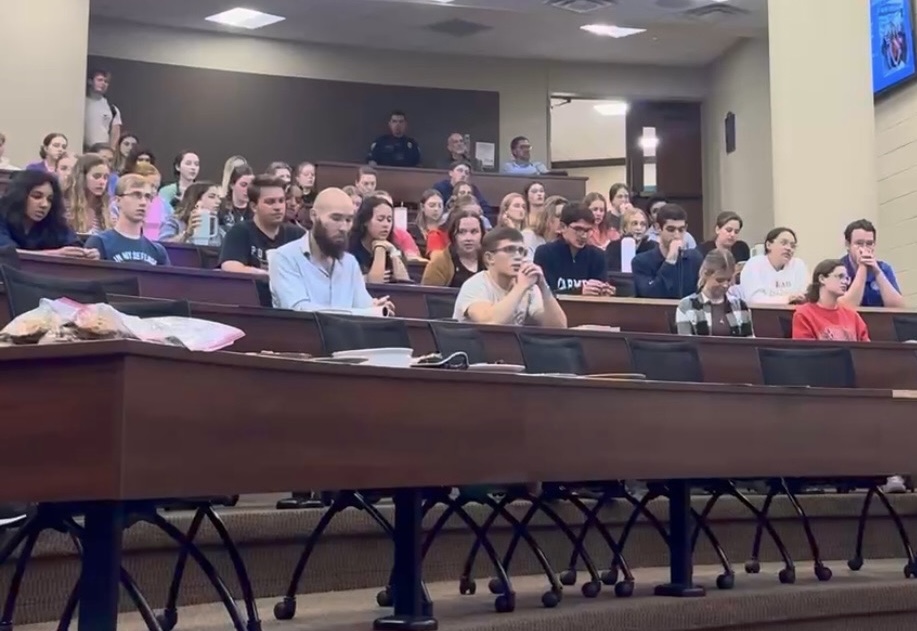College sports push athletes to their physical limits, with intense training schedules, high-stakes competition, and the risk of injury. Behind the scenes, athletic trainers serve as the backbone of collegiate athletics, providing crucial injury prevention, treatment, and rehabilitation.
Trella Davis, an athletic trainer at Benedictine, said, “Our job is to prevent and rehabilitate injuries as well as providing emergency medical care.”
Whether it’s responding to emergencies on the field, managing recovery programs, or offering daily support to student-athletes, these professionals ensure players can perform safely.
Davis said, “Equipment has become more advanced, allowing athletic trainers to better support their athletes.”
Athletes also have responsibilities to do anything they can to prevent injuries.
Davis said, “Athletes should stretch and focus on recovery, especially after games focusing on improving physically before the next event.”
Athletes can also help themselves while recovering from an injury by “listening to their athletic trainers, and doing what they are told. The more an athlete shows up and the more work they put in towards recovering, the better the recovery process will be” said Davis.
But there are some injuries that are hard to prevent, such as a concussion. The safety protocol for a head injury is a great example for how things have become more advanced in the medical community.
Davis said, “Trainers have gotten much better at diagnosing a concussion and the protocol has become more consistent across all levels. It is the gold standard now to baseline test athletes.”
According to the Brain Injury Association of America, “The first International Consensus Conference on Concussion in Sport was held in Vienna in 2001. It produced a return play guideline that called for the athlete to progress through various stages based on level of severity.”
Sports push an athlete’s body to the limit mentally and physically, and it is up to the athlete and those in medical positions such as athletic trainers to put health first.












































